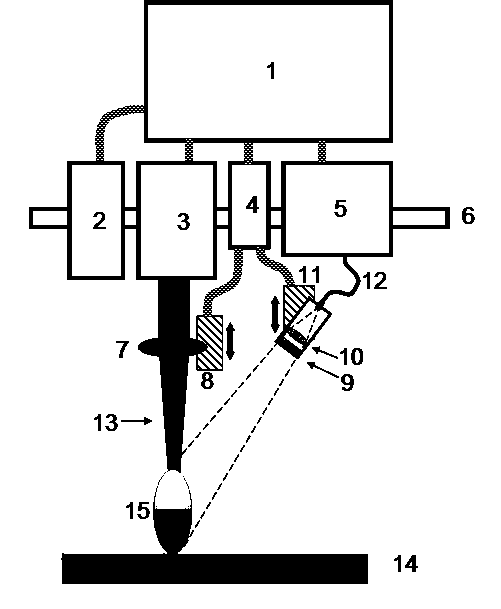Method for rapid detection of waste oil based on laser-induced breakdown spectroscopy
A technology of laser-induced breakdown and spectroscopy, which is applied in the field of rapid detection of waste oil based on laser-induced breakdown spectroscopy, can solve the problems of long detection time, complicated instruments, and increased conductivity of waste oil, achieving fast speed and high sensitivity. high effect
- Summary
- Abstract
- Description
- Claims
- Application Information
AI Technical Summary
Problems solved by technology
Method used
Image
Examples
Embodiment Construction
[0028] The present invention will be described in detail below in conjunction with the accompanying drawings and embodiments.
[0029] Such as figure 1 As shown, in the method for rapid detection of waste oil based on laser-induced breakdown spectroscopy in this embodiment, the computer 1 issues instructions to control the laser ranging module 2 to measure the distance L between the laser 3 and the sample surface 14, and the working principle of the laser ranging module 2 To emit a beam with a wavelength of 532nm, the energy density of a single pulse is about 150mJ / cm 2 The laser, and the laser beam forms a certain angle (about 2 degrees) with the normal line of the oil sample liquid surface. When the laser beam reaches the surface of the oil sample, it is reflected, and the reflected laser pulse is input to the receiving end of the laser measurement module 2. The distance L from the output port of the laser 3 to the sample surface can be determined according to the received ...
PUM
| Property | Measurement | Unit |
|---|---|---|
| wavelength | aaaaa | aaaaa |
Abstract
Description
Claims
Application Information
 Login to View More
Login to View More - R&D
- Intellectual Property
- Life Sciences
- Materials
- Tech Scout
- Unparalleled Data Quality
- Higher Quality Content
- 60% Fewer Hallucinations
Browse by: Latest US Patents, China's latest patents, Technical Efficacy Thesaurus, Application Domain, Technology Topic, Popular Technical Reports.
© 2025 PatSnap. All rights reserved.Legal|Privacy policy|Modern Slavery Act Transparency Statement|Sitemap|About US| Contact US: help@patsnap.com

